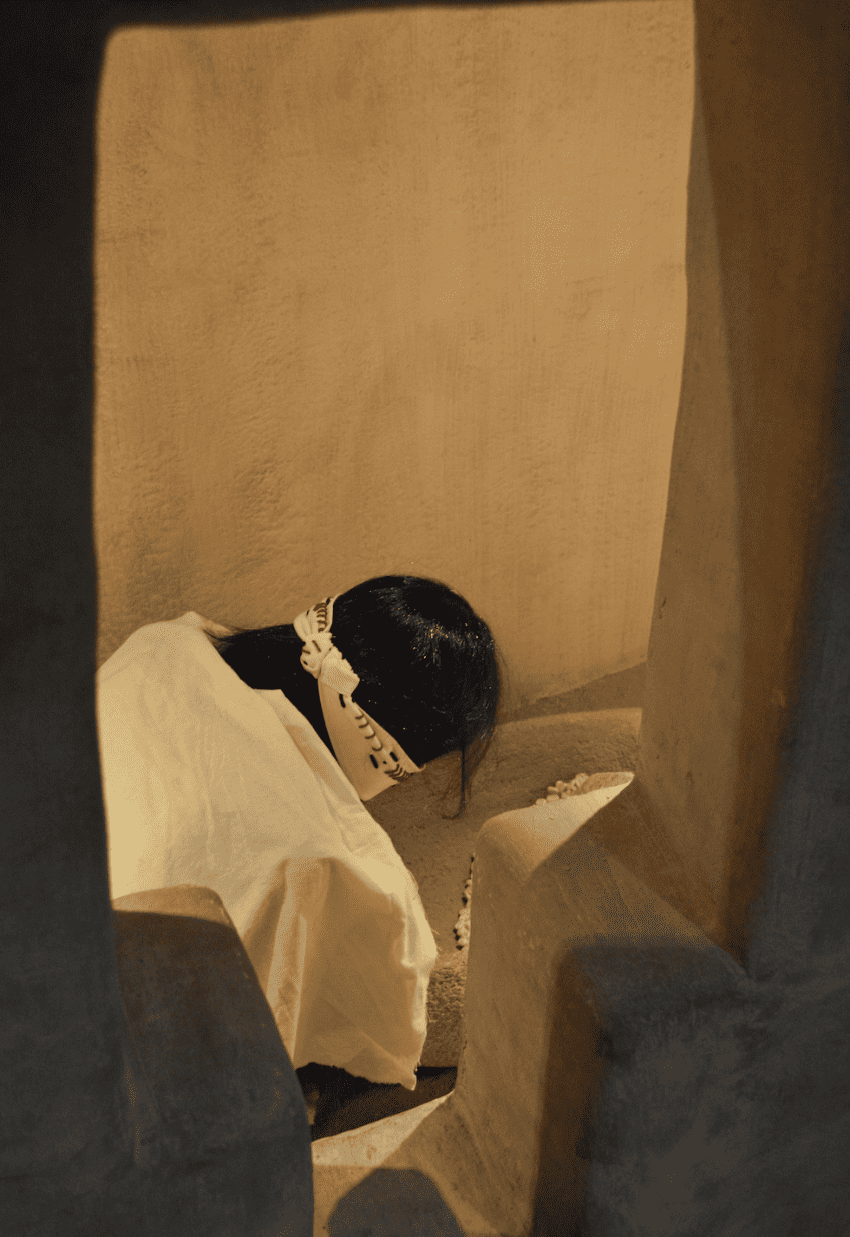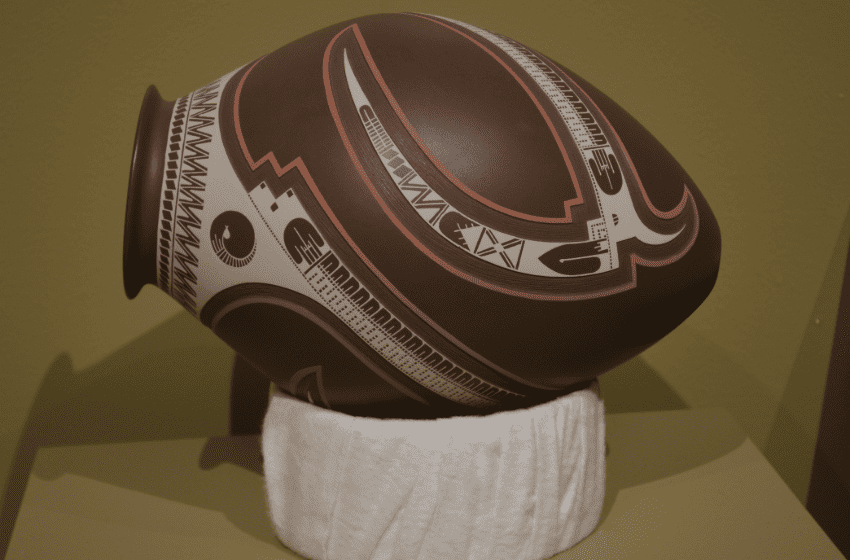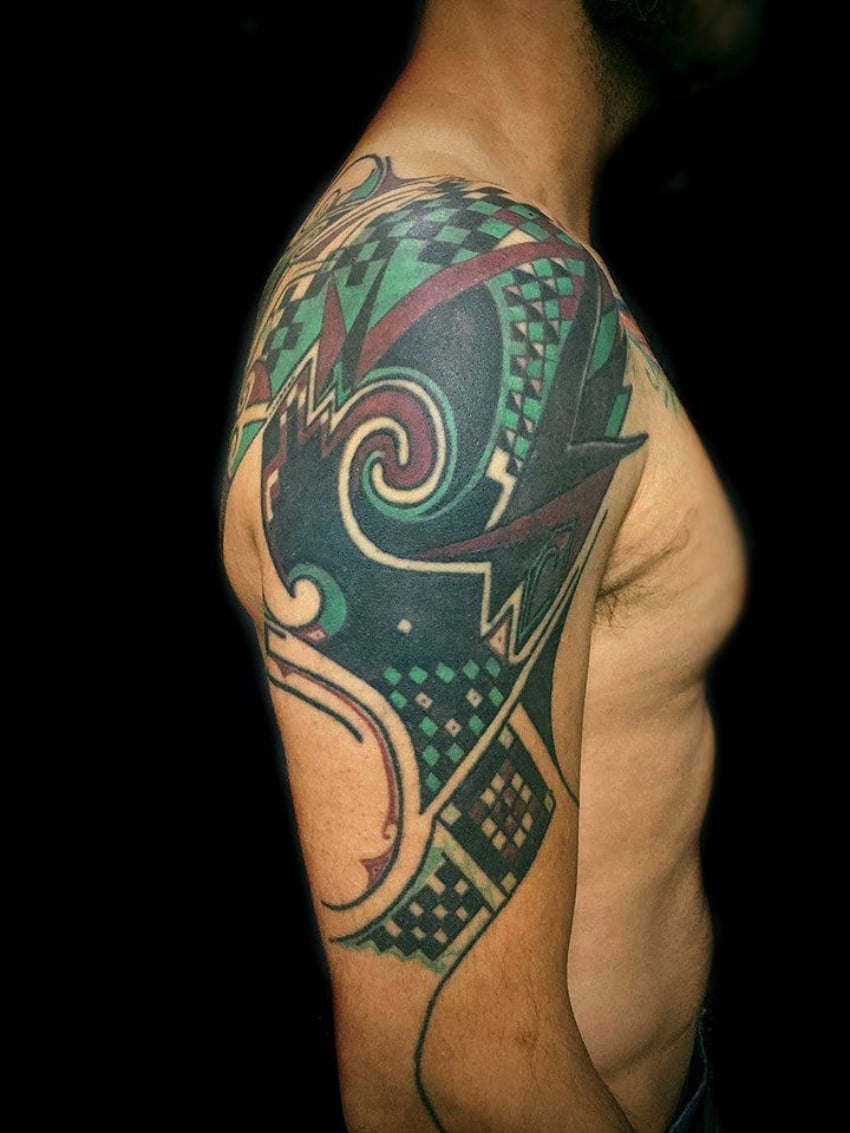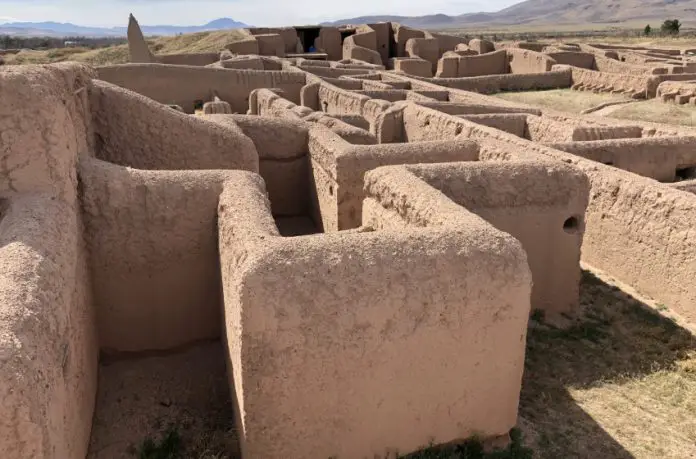The Paquimé archeological site is a testament that the north-south flow of goods and people has been crossing the “border” for millennia.
Though the site is hidden away in northwest Chihuahua state, the valley surrounding Paquimé once nurtured northern Mexico’s most important pre-Columbian culture.
Paquimé is referred to as “Casas Grandes” in English, but since that name also refers to the ancient culture and modern Pueblo Mágico next door, “Paquimé” distinguishes the site better. Either way, the translation to English is the same: “big houses.”
Northern and southern influences in the architecture
Those “big houses” are what strike you first when you enter Paquimé, distinguishing it from every other archeological site in Mexico. The living structures are large, interconnected rooms for the culture’s elite that arose and changed as the Casas Grandes culture developed from 700-1475.
They are the strongest architectural evidence for classifying Casas Grandes as a Mogollon culture, one of several that shaped parts of the present-day states of Chihuahua, Sonora, New Mexico and Arizona.

These kinds of adobe constructions can be seen farther north, but not to this sophistication. The adobe “bricks” were made by pouring water and earth into molds set to dry on top of walls, allowing for up to four stories. The very dry climate and overhanging roofs made the firing of bricks unnecessary.
Upon closer inspection of the site, important similarities with Mesoamerica appear. The most indisputable evidence of such influence is the Mesoamerican ball court. Plazas, columned patios and environmentally-situated mounds/pyramids also demonstrate links. But perhaps the most surprising example is the Macaw House. Far from their southern habitats, macaws were raised and sacrificed here despite the harsh climate.
An evolving understanding of Casas Grandes history
This evidence initially led archeologists to see Paquimé as a Mesoamerican outpost, but Casas Grandes was an independent society with important cultural and economic connections, from northwestern Mesoamerica to Old Pueblo territory in New Mexico.
Its status as a Mogollon site is based on the agreement that the valley was settled by migrations of people from the north, mostly likely escaping drought. Casas Grandes pottery has striking similarities with ancient and modern pottery from what is now the southwest US.
For simplicity, the culture’s history can be divided into three periods. The Viejo (old) period (700-1060) covers the transition from hunter-gatherer to agricultural subsistence and the appearance of the first villages along rivers and streams, fed by waters from the Sierra Madre Occidental.
The Medio (middle) period (1060-1340) is marked by the rise of Paquimé imposing a centralized command over the valley’s villages and a population of over 10,000. The big houses and pottery reach their height at this time.
Evidence of instability appears as early as 1150, but a sacking in 1340 marks a period of slow decline called the Tardío (late) period, which likely ended in 1475. Trade activity, the development of fine pottery and the construction of “big houses” continues, but the elite’s hold on power is eroding.

Paquimé suffers complete destruction in 1475, with everything in sight destroyed in fire. Why is strongly debated. Internal strife caused by drought is a good possibility, but Paquimé’s great trade wealth also made it a target.
Registered tour guide Azucena Durán offers another explanation that has limited prominence in academic sources. The ball court and evidence of human sacrifice, she says, may indicate that Mesoamerica was pushing their hegemony to a point that the locals could no longer permit, choosing to destroy their city rather than submit – perhaps it’s an allegory of northern Mexico’s ambivalence to Mexico City.
The destruction of Paquimé occurred long before the arrival of the Spanish, who discovered its ruins. Some archeologists believe that survivors from its demise fled to the mountains and that their descendants fought the Spanish before they disappeared.
Trade links north and south – then and now
The lack of written records hinders our understanding of Paquimé, but artifacts leave no doubt that it was a rich city with far-flung connections.
The market of the main plaza reveals a wealth of local and “foreign” items, but three are of the greatest interest: turquoise, copper and seashells.
By far, the most common are shells from the Pacific, both worked and raw, which served as a currency and store of wealth. The turquoise and copper prove Paquimé’s north-south reach, sourced from “New Mexico” and western Mesoamerican respectively. Paquimé yields only small quantities of both, likely because Paquimé was a conduit for the jewelry trade – an assertion supported by the fact that turquoise was very rare and extremely valued in Mesoamerica, as was copper in the far north.
Paquimé and modern northern Mexico identity

Though Paquimé fell long ago, north-south trade remains as important as ever, as evidenced by the trucks and freight trains that traverse central Chihuahua today.
In recent decades, Paquimé and the Casas Grandes culture have experienced a resurgence in importance, especially for regional identity. Northern Mexico has always been a shifting cultural and demographic landscape. Influence still flows in from the north and the south, but today, those influences stem from modern Mexico City and the mostly Anglo culture of the United States.
But pride in being a chihuahuense has prompted modern inhabitants to appropriate the iconography of Casas Grandes.
The first manifestation of this was Mata Ortiz’s pottery, a recreation and modernization of Paquimé work which first achieved commercial success north of the border and today receives more respect within Mexico. Even more recent is the rise of Casas Grandes-style tattoos among the youth of Chihuahua city.
Still, the Paquimé site has not garnered the same attention that Teotihuacan and other Mesoamerican sites do, despite being named a World Heritage Site in 1998. Only in 2022 did state and federal authorities finally build a site museum well worth a visit.
But there are some distinct advantages to this. The lack of walls and other protections means you can enter the site anytime, appreciate the structures as they relate to their surroundings and be blessedly free from vendors and other tourists.
With reports from Arqueología Mexicana, INAH, INAH, México Desconocido, WHO, Chihuahua state, U New Mexico, COLEF and the Mexican government.
Leigh Thelmadatter arrived in Mexico over 20 years ago and fell in love with the land and the culture in particular its handcrafts and art. She is the author of Mexican Cartonería: Paper, Paste and Fiesta (Schiffer 2019). Her culture column appears regularly on Mexico News Daily.
